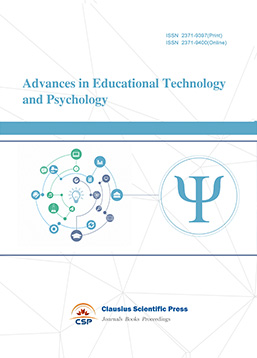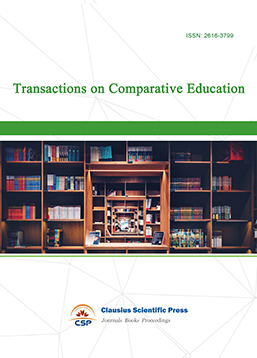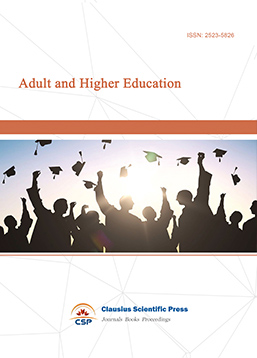Exploration and Practice of the "Promoting Teaching and Learning through Competitions" Teaching Model —Taking Track and Field Courses in Higher Vocational Colleges as an Example
DOI: 10.23977/curtm.2025.080803 | Downloads: 5 | Views: 135
Author(s)
Jie Zhang 1, Yan Cui 1, Dong Liu 1, Yiran Dan 1, Xiuling Wu 2
Affiliation(s)
1 School of Physical Education and Tourism, Sichuan International Studies Vocational College, Chengdu, Sichuan, 610103, China
2 School of Leisure Sports, Chengdu Sport University, Chengdu, Sichuan, 641499, China
Corresponding Author
Jie ZhangABSTRACT
As physical education curriculum reform continues to gain momentum in higher vocational colleges, the track and field courses, under the tutelage of the "elective system" and the "three self-directed approach" have experienced a decrease in student attendance, popularity of the course, and the quality of teaching assessment. To solve this problem, this paper suggests a competition based teaching model that has an active integration of competition practice with the course practice. This paper will discuss how one can enhance the physical fitness and athletic prowess of the students using engaging, rigorously graded and diversely structured tests. The selection is random and the control and experimental group are made out of the students taking a track and field course at a higher vocational college. Experimental group has a model of learning that is based on competitions which includes graded competitions, skill-building exercises, interesting challenges and teamwork exercises which is enhanced with regular testing and individualized instruction. The experimental group utilizes a conventional teaching model. There are profound variations between the experimental group in terms of the technical standardization, rhythm control, and coordination (17.0 ± 1.3) scores (p = 0.002 technical standardization, p = 0.005 rhythm control, and p < 0.01 coordination). As revealed in this research, competition-based learning model proves to be very effective in enhancing physical fitness and athletic skills and motivation to learn among students and make the course more attractive and viable.
KEYWORDS
Track and Field Courses in Higher Vocational Colleges; Teaching Model of Promoting Learning through Competition; Graded Competition; Personalized Training; Comprehensive Evaluation SystemCITE THIS PAPER
Jie Zhang, Yan Cui, Dong Liu, Yiran Dan, Xiuling Wu, Exploration and Practice of the "Promoting Teaching and Learning through Competitions" Teaching Model
—Taking Track and Field Courses in Higher Vocational Colleges as an Example. Curriculum and Teaching Methodology (2025) Vol. 8: 18-26. DOI: http://dx.doi.org/10.23977/curtm.2025.080803.
REFERENCES
[1] Jónsdóttir H H, Blöndal K S. The choice of track matters: Academic self-concept and sense of purpose in vocational and academic tracks[J]. Scandinavian Journal of Educational Research, 2023, 67(4): 621-636.
[2] Han X. Integration and Optimization of Teaching Resources for Electronics and Communications Courses in Higher Vocational Education[J]. Transactions on Comparative Education, 2024, 6(3): 157-163.
[3] Kadhim M A A, Mashi A A A, Al-Diwan L H, et al. Understanding the mechanism of conducting benchmark test for the infrastructure of physical education curricula in the age of artificial intelligence[J]. International Journal of Elementary Education, 2024, 13(1): 8-12.
[4] Rocliffe P, Adamakis M, O’Keeffe B T, et al. The impact of typical school provision of physical education, physical activity and sports on adolescent mental health and wellbeing: A systematic literature review[J]. Adolescent Research Review, 2024, 9(2): 339-364.
[5] Alfrey L, O’Connor J. Transforming physical education: an analysis of context and resources that support curriculum transformation and enactment[J]. Physical Education and Sport Pedagogy, 2024, 29(1): 1-17.
[6] MacPhail A, Tannehill D, Leirhaug P E, et al. Promoting instructional alignment in physical education teacher education[J]. Physical Education and Sport Pedagogy, 2023, 28(2): 153-164.
[7] Ikadarny I, Syafruddin M A. Application of Sprint Exercises to Student Long Jump Performance[J]. JOURNAL RESPECS (Research Physical Education and Sports), 2025, 7(1): 32-37.
[8] Xing G, Chano J, Thadanatthaphak Y, et al. Physical adaptation of college students in high-altitude training: Empirical findings and curriculum development insights to support Sustainable Development Goals (SDGs)[J]. ASEAN Journal of Educational Research and Technology, 2025, 4(2): 215-236.
[9] Gilson N D, Andersson D, Papinczak Z E, et al. High intensity and sprint interval training, and work‐related cognitive function in adults: A systematic review[J]. Scandinavian Journal of Medicine & Science in Sports, 2023, 33(6): 814-833.
[10] Ikhsan M, Kusuma I D M A W, Syafii I, et al. Does Sled Training with a Load of 10 Kilograms Have an Effect on the Speed of College Student Soccer Players?[J]. Physical Education Theory and Methodology, 2023, 23(6): 833-838.
[11] Rully M. Design Sprint by Sprinthink Helps Students Create Innovation Programs[J]. Educationist: Journal of Educational and Cultural Studies, 2023, 2(1): 270-275.
| Downloads: | 40683 |
|---|---|
| Visits: | 1792586 |

 Download as PDF
Download as PDF



